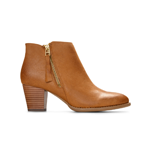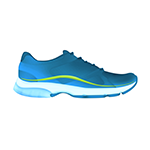
10 Post-Workout Recovery Tips

Whether you’ve just committed to a brand-new exercise regimen or you’re a veteran cardio-chaser equipped with orthotics to get the job done, a post workout recovery process is just as important as your weekly run, daily weight training, or weekend yoga class.
But, what does a good workout recovery look like? In this article, we’ll explore ten tips to optimize your post-workout time. While some will be familiar to you—like hydrating and soaking in the bathtub—others might not be. Keep an open mind while exploring our list, and consider incorporating one (or all!) of our tips to achieve maximum muscle recovery after workout time.
#1 Hydrate
Whether or not you downed your entire water bottle during your workout, hydration is crucial to workout recovery. While maintaining proper hydration is important for anyone—gym rats and couch potatoes alike—the benefits of water are especially helpful for exercise recovery.
Rehydrating after exercise can:1
- Lubricate creaky or sore joints
- Deliver nutrients to cells while they recover from strenuous activity
- Regulate your body temperature as you cool down
- Prevent infections spread in the gym
Maintaining proper hydration can be a hurdle for anyone, but if you’ve recently started exercising, it’s especially important that you consume enough water. To get into the habit of drinking water after a workout, try:
- Setting reminder alarms on your phone
- Carrying a full, reusable bottle so that you always have water on-hand
- Using a mobile app to track your water intake
While there isn’t a medical consensus on how much water you should drink daily, listen to your body. When you’re thirsty, overheated, or sore from your hard workout, it’s time for a cool glass of water.
#2 Get Clean
While it might feel good to cool down in your gym clothes, run errands after your spin class, or reduce your laundry demands by wearing your workout sweats for the rest of the day, getting out of your sweaty clothes as soon as possible is beneficial for skin health.
Sweaty, damp surfaces—like your post-workout attire and your skin—are excellent breeding grounds for bacteria and fungi. While working up a good sweat is one of the best parts of a workout, sweat inevitably builds up in your clothes, turning a freshly-dried pair of socks, underwear, or leggings into a petri dish.
Don’t skip your next workout because you’re too itchy—avoid fungal and bacterial buildup by cleaning yourself as soon as possible after working out.

#3 Stay in Motion
Instead of flopping down onto the couch after setting a new PR on the treadmill, keep your walking shoes for men or women on and try to keep your body in motion after working out. The benefits are twofold:
- You’ll prevent Delayed Onset Muscle Soreness (DOMS).
- You’re more likely to maintain productivity throughout the rest of the day.
DOMS is a given when starting any new exercise routine.2 But, continuing to walk, stand, or complete chores or errands throughout the day will help keep your body from settling into muscle stiffness, allowing gradual muscle repair as you cool down from your workout.
After any workout, the reward pathway in your brain wants to keep the achievement train rolling. When you complete a task—like working out—your brain releases dopamine, making you feel happy and satisfied.3 But, that dopamine release also motivates you to keep accomplishing tasks so that you can reward your brain with more dopamine. You can fuel that oh-so-rewarding pathway by staying active throughout the rest of the day, accomplishing tasks, encouraging blood flow and producing even more neurological rewards.
#4 Stretch
Wondering what to do before exercise and after exercise? Stretching is one of the best ways to relieve muscle soreness and pain while encouraging muscle recovery after a minor or intense workout. Better yet, stretching plays a role in maintaining and promoting joint health, which is crucial to any exercise devotee.4
During stretching, we’re primarily elongating our joints. Joints and muscles are repaired, improved, and maintained in the same way—by introducing them to a strenuous movement, letting them heal, and repeating that process regularly.
As we stretch our joints, we’re encouraging muscle repair to have them grow stronger—and working joints are crucial to every exercise, from tai chi to heavy weightlifting. Learn how to stretch and incorporate it into your post-workout routine, and your joints will thank you.

#5 Refuel
Post workout nutrition is important, even after non-strenuous exercise. After a workout, consuming a recovery drink like a whey protein shake or eating a light snack or a healthy meal will help you replenish the calories burned. This will help give you energy to complete other tasks and make sure your body has enough nutrition it needs to repair the muscle fiber.
But, since some people have a hard time fitting three regular meals into their schedule each day, here are some tips to keep you fed after your workout:
- If you workout at the end of the day, but find that you don’t have much energy for anything but sleep once you get home, consider preparing meals ahead of time that you can reheat or enjoy cold once you get home.
- Make sure you have a snack available on the go by keeping a pack of pre-packaged snacks in your car, briefcase, or purse. Granola bars, all-natural fruit snacks, and small boxes of raisins are all excellent options.
- Set reminders on your phone to have a snack. If you have a rigid daily routine, set your alarm to go off as soon as you have access to a snack or a meal.
#6 Soak in Epsom Salts
If you recently upped your reps for leg day or you took a jog in the park for the first time ever, you’re likely experiencing soreness. The perfect solution: a soak in a bath with Epsom salts.
The combination of hot bathwater and the restorative, soothing properties of Epsom salt will ease your aches and pains while giving you an excellent excuse to pamper yourself. Why not throw in a face mask or a foot scrub while you’re at it?
#7 Check In with Your Body
Whether you’re new to exercise or you’ve recently added a new type of workout training to your routine, any change from the norm requires an adjustment. While you get used to the changes, it’s important to check in with your body to make sure your new regimen is working for you.
Checking in with your body could look like:
- Giving yourself a massage to find sore muscle spots that need ice or topical pain relief.
- Monitoring (and maybe even documenting) the sore muscle as you complete day-to-day activities like walking, standing, sitting, and climbing stairs to detect potential injuries as soon as possible.
- Talking to your doctor about changes in your bloodwork or physical examinations.
The whole point of exercise is to take care of your body. Checking in to make sure your body is always functioning the way you want it to can help prevent injuries and identify problems before they become serious.
#8 Cross-Train with a Less Strenuous Exercise
If you need a more structured cool-down after a strenuous workout, consider cross-training with a less intense exercise style. Consider the following cross-training ideas:
- If you’re starting to feel shin splints after running on a new trail, try jumping into a tai chi class after your weekly runs.
- If your weight training is wearing on your joints, take a stab at water aerobics or a light swim workout to feel the burn while relieving your joints.
- If you’re an aerial athlete struggling with flexibility and strains, consider adding yoga to your cross-training regimen.
#9 Pause, Reflect, and Plan
To meet goals, you have to intentionally work towards them. But, how do you set goals in the first place? By sitting down, reflecting on what you want from your workouts, and setting attainable goals to get there.
If you just started jogging, think of a reasonable outcome for that activity—perhaps you want to run a 5k after a few months of training or join a local running group with a set pace. But, don’t just follow an exercise trend without an end goal in sight. Without something to strive for, you could lose your motivation to continue.
After your workouts, reflect upon how your exercise today helped you progress towards your goals. If it didn’t, it may be time to change up your workout routine—or shift your goals to accommodate changes in your workout preferences.
#10 Embrace Rest
Just like exercise, rest should be intentional. Remember that, while you take a rest day, you’re helping your body prepare for your next intense workout. But, to really follow your recovery timeline wisely, think about other ways you can prepare for future workouts, like:
- Creating a new playlist for your sprint training in the morning
- Finally ordering those orthotics to address your pronating issue
- Prepping a few homemade snacks to enjoy after this week’s workouts
If your friends describe you as type-A, a go-getter, or super motivated, it might be hard to rest. But, by making rest intentional and productive, you’ll make it easier to embrace recovery.
Vionic Keeps You Moving
Exercising without a recovery plan is like trying to make a meal without doing the prep work. Try to integrate one or more of the tips above into your post-workout recovery process to encourage muscle and joint health, take time to check in, and take other intentional actions towards maintaining your health and wellness.
Vionic knows exactly what it takes to keep an athlete going: strong will, hydration and fuel, and the right tools.
All of our shoes, from sneakers to walking shoes for women feature our Vio-Motion technology, stabilizing your heels, supporting your arches, and cushioning your toes whether you’re on the jogging trail or sauntering across the lido deck on your next cruise. For comfort, wellness, and style, look no further than Vionic Shoes.
Sources:
- Harvard School of Public Health. The Importance of Hydration. https://www.hsph.harvard.edu/news/hsph-in-the-news/the-importance-of-hydration/
- American College of Sports Medicine. Delayed Onset Muscle Soreness (DOMS). https://www.acsm.org/docs/default-source/files-for-resource-library/delayed-onset-muscle-soreness-(doms).pdf?sfvrsn=8f430e18_2
- US National Library of Medicine. Neurochemical and behavioral indices of exercise reward are independent of exercise controllability. https://www.ncbi.nlm.nih.gov/pmc/articles/PMC4918765/
- US National Library of Medicine. The role of stretching in tendon injuries. https://www.ncbi.nlm.nih.gov/pmc/articles/PMC2658965/
- Medline Plus. Tinea Infection. https://medlineplus.gov/tineainfections.html










